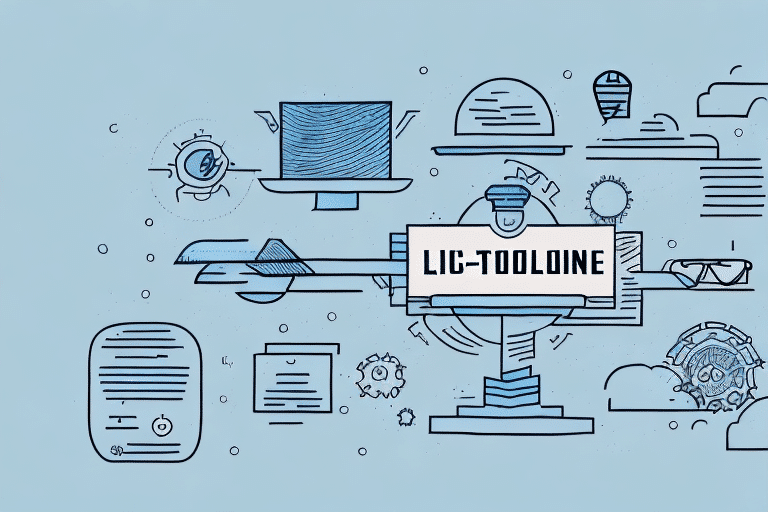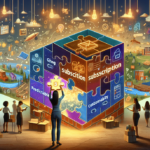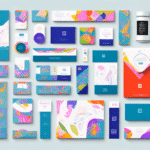What Is Product Retention? A Comprehensive Guide
Product retention is the practice of maintaining customer loyalty and engagement by keeping them coming back to use your product or service. It's a key metric that measures how long customers continue to use your product after their initial purchase or subscription. In short, it's about ensuring that your customers stay with you for the long term, ultimately improving your bottom line.
But why is product retention so important for your business? Firstly, retaining customers is more cost-effective than acquiring new ones. Studies show that it's five to twenty-five times more expensive to acquire a new customer than to retain an existing one (Harvard Business Review). Retaining customers also leads to better revenue, as loyal customers tend to purchase more often and spend more money than new customers. Additionally, increased retention translates into positive word-of-mouth, which can bring in new customers and create a valuable cycle of customers who refer others.
Understanding the Importance of Product Retention
Why Product Retention Is Important for Your Business
Product retention is a crucial metric for businesses of all sizes and sectors. By focusing on retaining customers, businesses can drive up revenue and create a more loyal customer base. Moreover, product retention can also improve profitability, as it costs less to keep an existing customer than to acquire a new one. One of the key benefits of product retention is that it can lead to increased customer lifetime value. When customers continue to use a product or service over time, they are more likely to make repeat purchases and become advocates for the brand. This can result in higher revenue per customer and a stronger overall brand reputation. Additionally, by focusing on product retention, businesses can identify areas for improvement and make necessary changes to enhance the customer experience. By prioritizing customer satisfaction and loyalty, businesses can build a sustainable and successful long-term strategy.
According to Bain & Company, increasing customer retention rates by just 5% can increase profits by 25% to 95%.
The Benefits of Product Retention for Your Customers
Product retention is not only important for businesses but also for customers. A customer who feels valued and appreciated is more likely to stay loyal and continue using a product or service. Retained customers enjoy a host of benefits, including personalized offers, better customer service, and exclusive access to new features. Furthermore, customers who are loyal to a brand tend to be more engaged and invested in the company's mission, which strengthens their connection with the brand.
- Personalized Offers: Tailored discounts and promotions that meet the specific needs of return customers.
- Enhanced Customer Service: Priority support and dedicated service channels for loyal customers.
- Exclusive Access: Early access to new products, features, or events reserved for long-term customers.
Another benefit of product retention for customers is the convenience it provides. When customers are familiar with a product or service, they don't have to spend time researching and comparing alternatives, saving them time and effort. Additionally, retained customers often have a better understanding of how to use the product or service, which can lead to increased efficiency and productivity.
Finally, product retention can also lead to cost savings for customers. Many businesses offer loyalty programs or discounts to their retained customers, which can add up to significant savings over time. Additionally, retained customers are less likely to experience issues or problems with a product or service, which can save them money on repairs or replacements.
Product Retention vs Customer Acquisition
The Difference Between Product Retention and Customer Acquisition
Although both product retention and customer acquisition are important to businesses, they are fundamentally different concepts. Customer acquisition is about bringing in new customers to your business and increasing overall sales. Retention, on the other hand, is about keeping those customers engaged and coming back to use the product or service. A strong retention strategy complements customer acquisition by ensuring that the new customers have a reason to stay loyal to the business.
Cost Implications
One of the key differences between product retention and customer acquisition is the cost involved. Customer acquisition can be expensive, as businesses often need to invest in marketing and advertising to attract new customers. Retention, on the other hand, can be more cost-effective, as it involves building relationships with existing customers and providing them with a positive experience that encourages them to continue using the product or service.
According to Forbes, focusing on customer retention can lead to more sustainable growth and reduced marketing costs over time.
Building Brand Loyalty
Another important aspect of product retention is the role it plays in building brand loyalty. When customers feel satisfied with a product or service, they are more likely to recommend it to others and become advocates for the brand. This can lead to increased word-of-mouth marketing and a stronger reputation for the business, which can ultimately lead to more sales and growth over time.
Effective Product Retention Strategies
Understanding the Customer Journey: How Product Retention Fits In
Product retention is crucial during the customer journey and should be incorporated into every stage of the process. For example, during the onboarding process, it's essential to provide new customers with clear instructions on how to use the product and offer personalized support to ensure that they understand its value. During the continued usage phase, companies should offer ongoing support, reward programs, and personalized communication, highlighting new features, and demonstrating that their past feedback has been listened to. Finally, companies should provide opportunities for customers to upgrade or expand their use of the product, ensuring that customers are not left behind as their needs evolve.
- Onboarding: Clear instructions and personalized support to help new customers understand the product's value.
- Continuous Engagement: Regular updates, reward programs, and personalized communication to keep customers engaged.
- Expansion: Opportunities for customers to upgrade or expand their use of the product as their needs grow.
One effective way to improve product retention is by gathering customer feedback and using it to make improvements to the product. This can be done through surveys, focus groups, or by analyzing customer support interactions. By listening to customer feedback and making changes based on their needs, companies can increase customer satisfaction and loyalty, ultimately leading to higher retention rates. Additionally, companies can use data analytics to track customer behavior and identify potential areas for improvement in the product or customer experience.
The Role of Customer Feedback in Product Retention Strategies
Customers play a crucial role in product retention strategies as their feedback provides insights into the product experience. By soliciting feedback and implementing changes based on customer input, businesses can create a more satisfying product experience. Listening to customer feedback and engaging with them through surveys, feedback forms, and social media strengthens the customer bond and can lead to higher retention rates.
Common Mistakes to Avoid When Implementing Product Retention Strategies
One of the most significant mistakes companies make when implementing product retention strategies is focusing only on short-term goals. Successful retention strategies require a long-term perspective that allows flexibility and adaptation to evolving customer needs. Another common mistake is not tracking retention metrics correctly. A lack of data can make it difficult to measure progress and optimize retention strategies. Finally, failing to test different retention strategies to see what works best can lead to lost value opportunities.
Best Practices for Measuring and Tracking Product Retention Rates
Measuring product retention rates can be challenging because retention can be influenced by many external factors. The most effective way to measure retention is to calculate retention rates over different periods. Companies should track retention rates for both new and existing customers over different time periods and compare results, which provides valuable insights into the efficiency of retention strategies. Moreover, identifying reasons for churn and analyzing retention trends will help to identify the most successful retention strategies.
Using tools like cohort analysis and customer lifetime value (CLV) calculations can also aid in understanding retention patterns. According to NGDATA, leveraging advanced analytics can enhance the accuracy of retention measurements.
Using Data Analytics to Improve Your Product Retention Strategy
Data analytics is a powerful tool that can aid in the development of effective retention strategies. By analyzing product usage data, businesses can better understand customer behavior and preferences, identify their pain points, and respond proactively, tailoring solutions to specific customer needs. Data analytics can also aid in targeting specific customer groups more effectively and providing incentives to keep them engaged and satisfied.
Implementing systems that track user interactions, purchases, and feedback can offer actionable insights. For example, Tableau provides robust data visualization tools that help businesses interpret complex data sets to inform retention strategies.
Tips for Building Stronger Relationships with Your Customers through Product Retention
Building strong relationships with customers requires creating empathetic experiences that show customers you care. Personalizing interactions, offering rewards and incentives, and making sure feedback is implemented all foster customer loyalty. Social media can be used to interact with customers at scale while remaining empathetic and responsive. Finally, optimizing the user experience at every touchpoint supports the customer retention strategy and makes customers perceive the product as valuable and optimized for their needs.
- Personalized Interactions: Tailoring communication and offers to individual customer preferences.
- Rewards and Incentives: Implementing loyalty programs and exclusive discounts to reward repeat customers.
- Responsive Customer Service: Providing timely and effective support through various channels.
- Optimized User Experience: Ensuring the product is user-friendly and meets customer needs effectively.
How to Create a Sustainable and Scalable Product Retention Plan
To create a sustainable and scalable retention plan, businesses must consider a long-term approach that adjusts to customers' evolving needs. They must also incorporate feedback and track results, establishing customer satisfaction and predicting churn with data. As the plan evolves and grows, it's crucial to remain patient with the initial pace of improvement and to respond carefully and strategically to changing customer expectations. This approach creates a product-retention culture within the company, reflecting how valuable the customers are to the organization's overall success and growth.
Using Technology to Enhance Your Product Retention Efforts
Technology offers countless opportunities to improve product retention rates. Using personalized notifications to keep customers engaged, dynamic content and user-generated content (UGC) encourage the customer to see others' experiences and create a sense of community, and chatbots to offer instant support when needed all enhance the customer experience. Fragmented software solutions create unnecessary friction and complicate the customer experience. Thus, it's essential to have products and tools that work together seamlessly, creating continuity and minimizing confusion.
- Personalized Notifications: Sending tailored alerts and messages based on user behavior.
- Dynamic Content and UGC: Encouraging customers to share their experiences and creating a community feel.
- Chatbots: Providing instant support and assistance to customers anytime.
- Integrated Tools: Utilizing software that works seamlessly together to streamline customer interactions.
Balancing Short-Term and Long-Term Goals in Your Product Retention Strategy
The most successful retention strategies balance short-term revenue goals with long-term customer satisfaction. It's crucial for companies not to become short-sighted and compromise customer satisfaction and loyalty with quick fixes for short-term profit. Instead, a thorough approach to customer needs, feedback loops, and retention-tracking data allows businesses to identify issues before they become problematic, address the customer's problem, and maintain their retention with goodwill. That way, customers feel cared for and appreciated.
Case Studies and Future Trends in Product Retention
Examples of Successful Product Retention Strategies from Top Brands
Tech companies like Amazon and Netflix are well known for their successful product retention strategies. Amazon's Prime membership offers free shipping, exclusive discounts on products, and access to streaming services, providing customers with multifaceted value. Netflix, on the other hand, has been successful in keeping customers engaged with personalized recommendations and new content that feels custom-tailored to each user. These companies' retention strategies prove that customer-centric approaches are critical to engaging and retaining customers.
The Future of Product Retention: Trends and Predictions
The future of product retention is likely to be driven by technology and innovation, enhancing customer experiences and providing products that are more personalized, adaptive, and intuitive. Automation and AI will facilitate more sophisticated customer targeting and data analysis, leading to more effective retention strategies. The trend towards sustainability and value creation over profit maximization may lead companies to carefully consider long-term retention plans over short-term profit quests.
Emerging trends such as predictive analytics and machine learning will enable businesses to anticipate customer needs and proactively address potential issues before they lead to churn. Additionally, integrating omnichannel strategies to ensure consistent experiences across all customer touchpoints will become increasingly important in maintaining high retention rates.
Conclusion
In conclusion, product retention is vital for businesses to create loyal customers who continue to use their products over an extended period. Businesses need to focus on the customer journey, gathering feedback, tracking data, and personalizing experiences. By using technology and understanding long-term goals, businesses can create successful retention strategies that will benefit both the customers and the business over the long run.






















